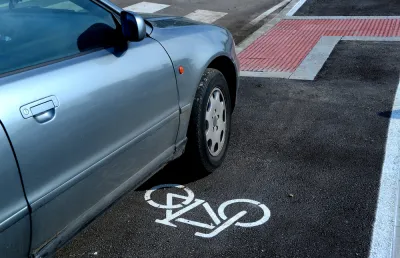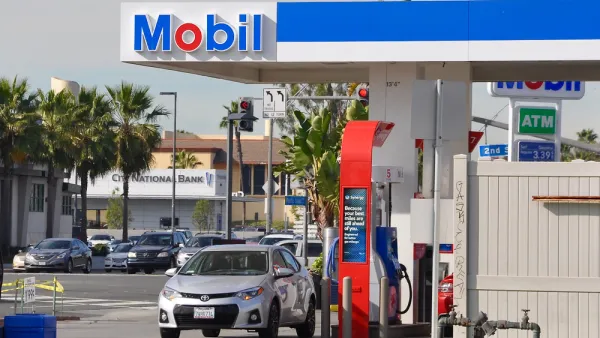Reducing the number of traffic lanes to improve bike and pedestrian safety can be inherently controversial when auto travel times are increased, and it can upset motorists further when they learn gas taxes are funding those safety improvements.

Patrick McGreevy, who covers the California Legislature out of the Sacramento bureau for the Los Angeles Times, reports on road diet controversies in Los Angeles and Sacramento, and how transportation funding is adding to the public debate, particularly since the passage of Senate Bill 1, the Road Repair and Accountability Act of 2017.
Senate Bill 1 includes $100 million in gas tax money annually designated for bicycle and pedestrian projects, which are key elements of many road diets.
The bulk of SB 1 money, $2.27 billion in the first year, went to state projects to repair and maintain roads, while $750 million annually was set aside for public transportation capital projects and operating expenses.
Annual revenue from the five tax and fee increases in SB 1 [see Figure 2: Transportation Revenue Increases on pg. 3 of LAO report (pdf)] is estimated at $5.4 billion, so the $100 million directed to the Caltrans Active Transportation Program amounts to 1.85 percent. However, the $1.5 billion that is assigned to repairs to local streets and roads may be eligible for complete streets projects.
The gas tax revenue is mainly used for the rehabilitation and replacement of roads and bridges, but some of the money can legally go to road diet projects, said Matt Rocco, a spokesman for the California Department of Transportation.
Opposition to spending gas tax funds on lane reductions comes from road diet opponents, unsurprisingly, and also at least one prominent taxpayer's group, reports McGreevy.
“The money should be used to help with congestion overall, and I don’t think that road diets help congestion. I think they cause congestion,” said Selena Inouye, board president of the Westside Los Angeles Neighbors Network, a group formed in response to Venice Boulevard’s controversial ‘road diet’ in Mar Vista to make space for a protected bicycle lane. [The project was approved prior to the passage of SB 1 in April 2017.]
Gas tax money can legally go to such projects, but that does not mean it should, said David Wolfe, legislative director for the Howard Jarvis Taxpayers Assn., which opposed the original gas tax increase and supported an unsuccessful statewide ballot measure last year to repeal it. It has since continued to watch and criticize how state and local governments are spending the money.
Wolfe’s office in Sacramento overlooks J Street, a one-way road and major traffic corridor in the city center that was recently reduced from three lanes to two. The space taken from motorists was used to create a protected bike lane buffered from traffic by parking spaces moved away from the curb.
FULL STORY: Using California gas tax to reduce traffic lanes? Not how it should be spent, some say

National Parks Layoffs Will Cause Communities to Lose Billions
Thousands of essential park workers were laid off this week, just before the busy spring break season.

Retro-silient?: America’s First “Eco-burb,” The Woodlands Turns 50
A master-planned community north of Houston offers lessons on green infrastructure and resilient design, but falls short of its founder’s lofty affordability and walkability goals.

Delivering for America Plan Will Downgrade Mail Service in at Least 49.5 Percent of Zip Codes
Republican and Democrat lawmakers criticize the plan for its disproportionate negative impact on rural communities.

Test News Post 1
This is a summary

Test News Headline 46
Test for the image on the front page.

Balancing Bombs and Butterflies: How the National Guard Protects a Rare Species
The National Guard at Fort Indiantown Gap uses GIS technology and land management strategies to balance military training with conservation efforts, ensuring the survival of the rare eastern regal fritillary butterfly.
Urban Design for Planners 1: Software Tools
This six-course series explores essential urban design concepts using open source software and equips planners with the tools they need to participate fully in the urban design process.
Planning for Universal Design
Learn the tools for implementing Universal Design in planning regulations.
EMC Planning Group, Inc.
Planetizen
Planetizen
Mpact (formerly Rail~Volution)
Great Falls Development Authority, Inc.
HUDs Office of Policy Development and Research
NYU Wagner Graduate School of Public Service





























